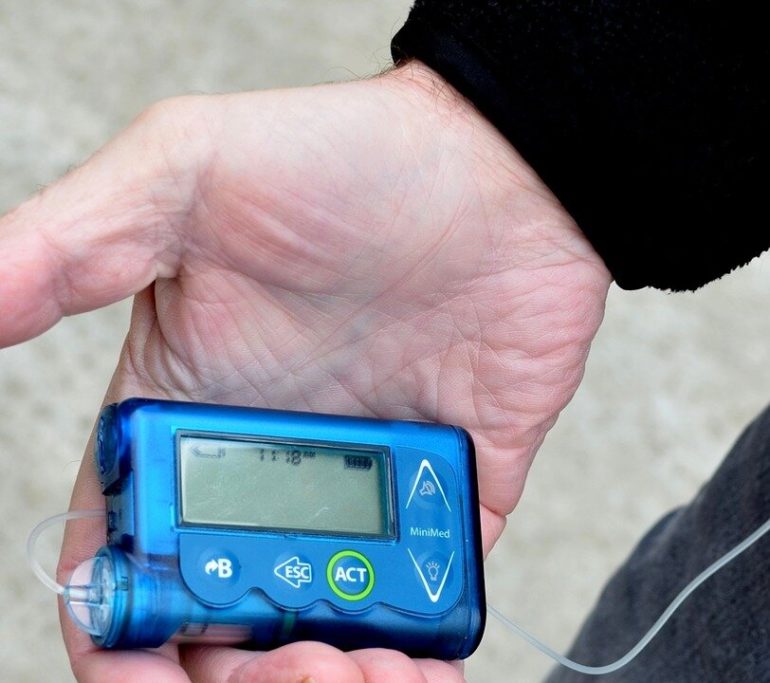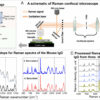In one of the largest and most racially diverse studies to date of American children and adolescents with type 1 and type 2 diabetes, researchers at Johns Hopkins Medicine, Baylor College of Medicine and the University of Wisconsin have identified the clinical and demographic factors associated with pediatric diabetic retinopathy. The disorder, a leading cause of vision loss worldwide, is characterized by damage to the small blood vessels lining the retina (the eye’s light-focusing area).
The researchers say the most important finding from the study—posted online Sept. 27, 2021, in JAMA Network Open—is that insulin pump users among those with type 1 diabetes are less likely to develop diabetic retinopathy, independent of other risk factors, compared with youth who get their insulin through multiple daily injections.
“We knew from previous studies that insulin pump use is associated with better glycemic control [management of blood sugar level] and lower hemoglobin A1c level [HbA1c is the amount of sugar attached to hemoglobin in red blood cells and a measure of blood sugar level], so we expected that it also would be associated with a reduced risk of complications from diabetes, such as diabetic retinopathy,” says study co-senior author Risa Wolf, M.D., Johns Hopkins Children’s Center pediatric endocrinologist and assistant professor of pediatrics at the Johns Hopkins University School of Medicine. “What surprised us was that insulin pump users appear to be more ‘protected’ against retinopathy regardless of their A1c levels.”
“Another benefit of insulin pumps shown by our study is that pump users had significantly fewer admissions for diabetic ketoacidosis, a serious condition that can lead to a diabetic coma or death,” says retina specialist Roomasa Channa, M.D., study co-senior author and assistant professor of ophthalmology and visual sciences at the University of Wisconsin School of Medicine and Public Health. “This finding—along with our evidence that pump use protects against retinopathy—suggests clinicians should encourage children and adolescents with type 1 diabetes to use this technology.”
To get their results, the researchers at the three participating institutions looked at 1,640 children and adolescents with either type 1 (74%) or type 2 (26%) diabetes. The average age was nearly 16, with females making up 53% of the group. There was a diverse mix of races and ethnicities: 40% non-Hispanic white, 31% Hispanic, 23% non-Hispanic Black and 6% other (American Indian or Alaska Native, Asian, Native Hawaiian or Pacific Islander, and unspecified or undeclared).
Overall, 558 of 1,216 patients (46%) with type 1 diabetes and five of 416 patients (1.2%) with type 2 diabetes used an insulin pump. Diabetic retinopathy was found in 57 of the total 1,640 participants, or 3.5%.
“Among those with type 1 diabetes, insulin pump use was associated with a lower likelihood of diabetic retinopathy, after adjusting for four other factors: race and ethnicity, insurance status [those with private health insurance have greater access to a pump], diabetes duration and HbA1c level,” says Wolf.
“Our data also initially showed that Black youth were 2.1 times more likely to develop diabetic retinopathy than white youth,” says Channa. “However, the difference between the two groups was no longer significant after we adjusted for insurance status, diabetes duration, HbA1c level, and insulin pump use for those with type 1 diabetes.”
Wolf and Channa says that the one disparity that remained after controlling for other factors was insulin pump use.
“Pump users were more likely to be white [59%, compared with 27% of Black youth] and have private or commercial insurance,” says Wolf. “This highlights the importance of making sure state-of-the-art technology is available to all children with diabetes—with a focus on identifying barriers to access and increasing pump use in minority populations.”
Men with young-onset type 2 diabetes at higher risk of retinopathy, study finds
More information:
Michael L. Ferm et al, Clinical and Demographic Factors Associated With Diabetic Retinopathy Among Young Patients With Diabetes, JAMA Network Open (2021). DOI: 10.1001/jamanetworkopen.2021.26126
Provided by
Johns Hopkins University School of Medicine
Citation:
Study: Youths who use insulin pumps less at risk for diabetic retinopathy (2021, October 8)
retrieved 10 October 2021
from https://medicalxpress.com/news/2021-10-youths-insulin-diabetic-retinopathy.html
This document is subject to copyright. Apart from any fair dealing for the purpose of private study or research, no
part may be reproduced without the written permission. The content is provided for information purposes only.



